Recently the naughty voice in my head told me to browse eBay, despite having no job and no storage space. I figured browsing hikizuri would keep me safe as they tend to be out of my price range anyway. Unfortunately, I listened to the naughty voice, found a gorgeous ume piece with multiple extra layers that happened to be a huge size, and now this stunner is now all mine! I’m fairly certain it will fit, but right now it’s just way too hot to wear something with so many layers and so much padding. I am looking forward to putting it on eventually, but in the meantime I couldn’t wait to put it on the mannequin instead.
It was listed as a geisha’s hikizuri on eBay, but the overall boldness and huge padded hems make it feel more like some kind of stage or dance piece. Either way, it’s absolutely stunning and it’s already a treasured part of my collection. I chose metallic, heavily textured accessories to balance out the rich black and smooth yuzen. The green shibori obiage isn’t technically appropriate but I really love how it draws attention to the green accents in the kimono that almost disappear otherwise. I think next time (maybe whenever I actually wear it) I might go with a white-and-silver obi instead of the primarily gold one, since most of the metallic accents on the piece are silver, but I think the gold works just fine. I tied the musubi on a bit of an angle to make it feel a bit more chic and I quite like how that looks.
This also happens to be the 100th kimono I own, if you count men’s items, uchikake, and yukata. A piece worthy of the milestone, in my opinion.
Items used in this coordination
- Ume Stage Hikizuri
- Gold Geometrics
- Textured Kiku
- Leaf Green Shibori
- Red Furisode

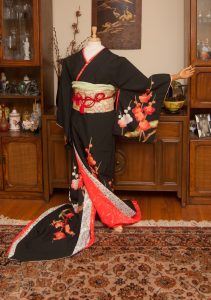
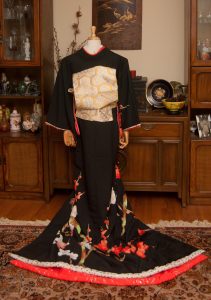
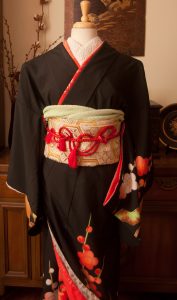
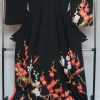
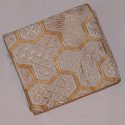
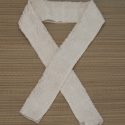
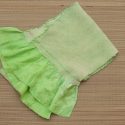
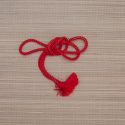
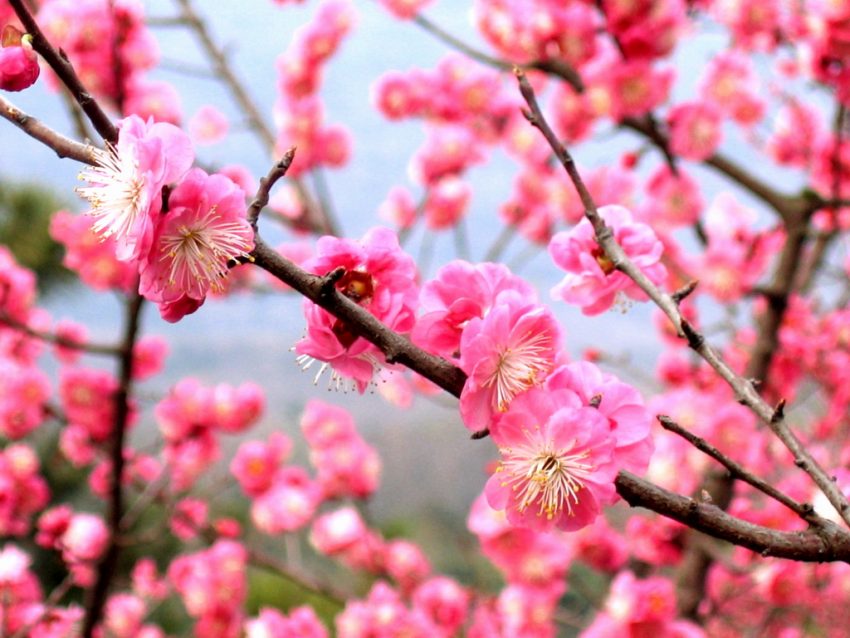
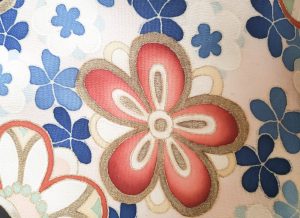
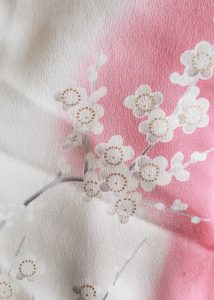
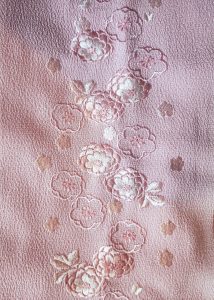
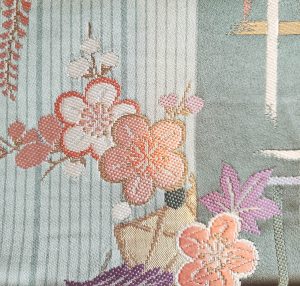
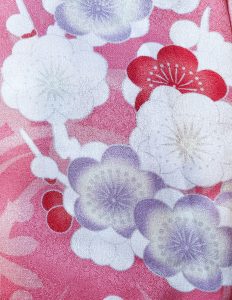
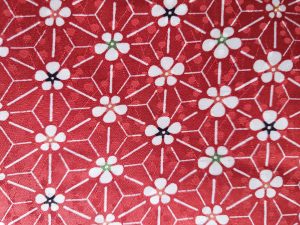
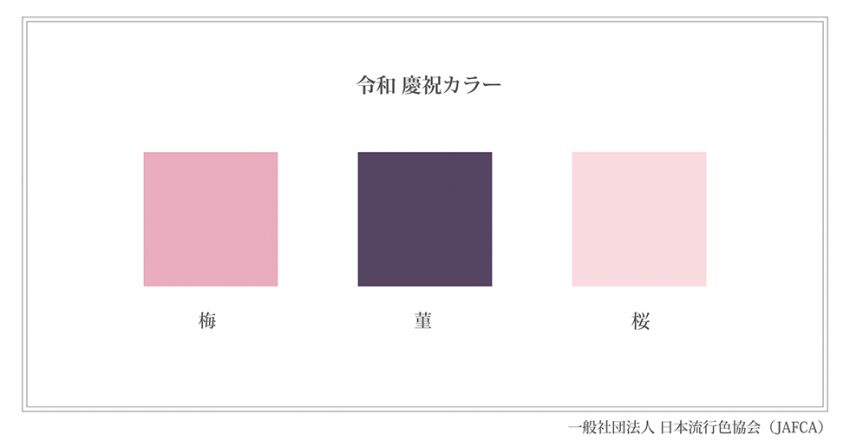
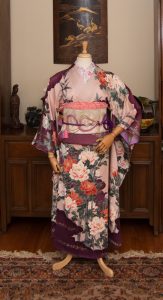
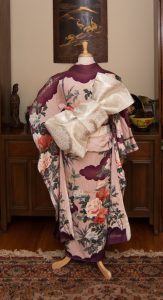
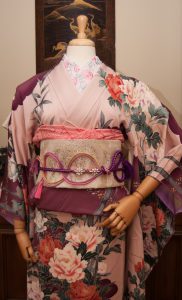
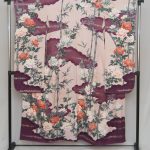
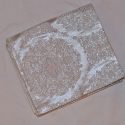
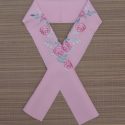
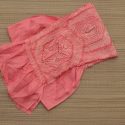
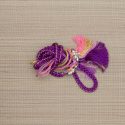
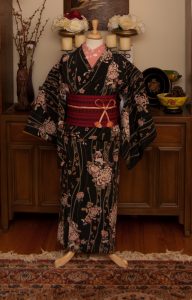
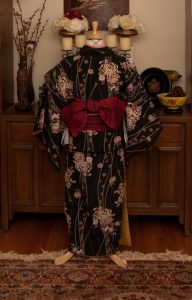
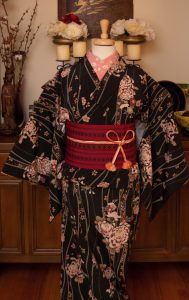
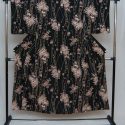
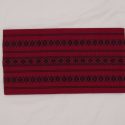


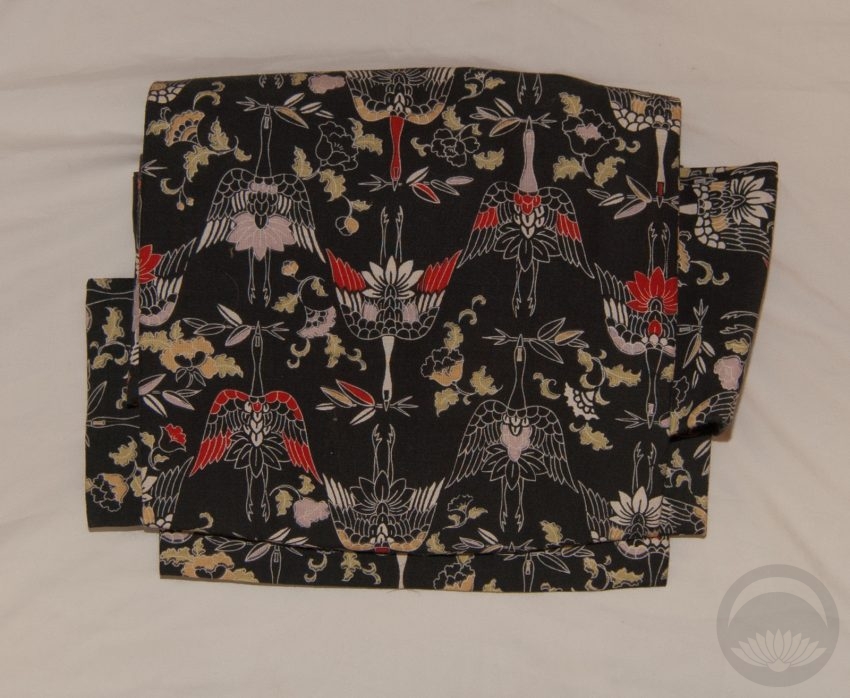
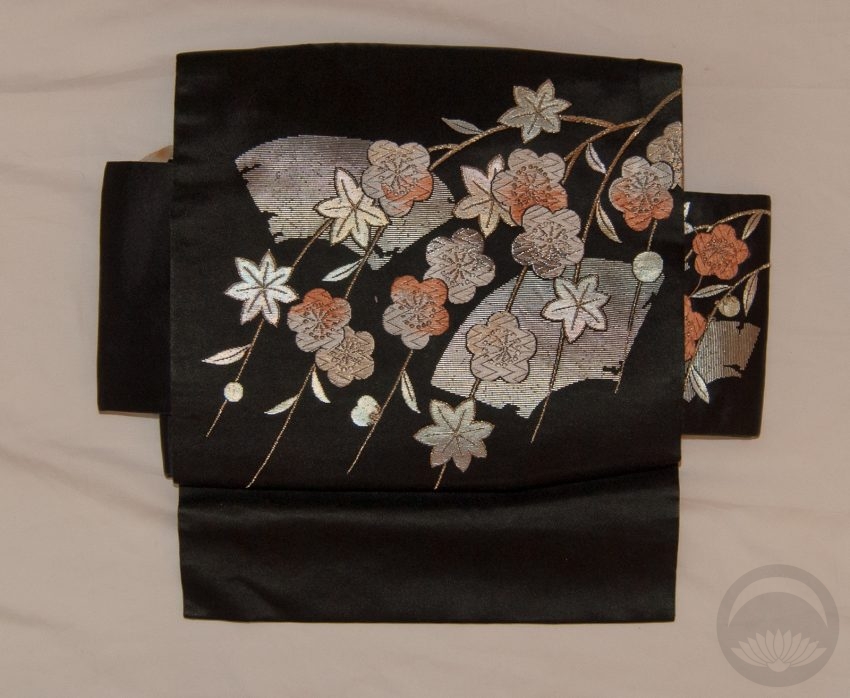
















 Bebe Taian
Bebe Taian CHOKO Blog
CHOKO Blog Silk & Bones
Silk & Bones Gion Kobu
Gion Kobu